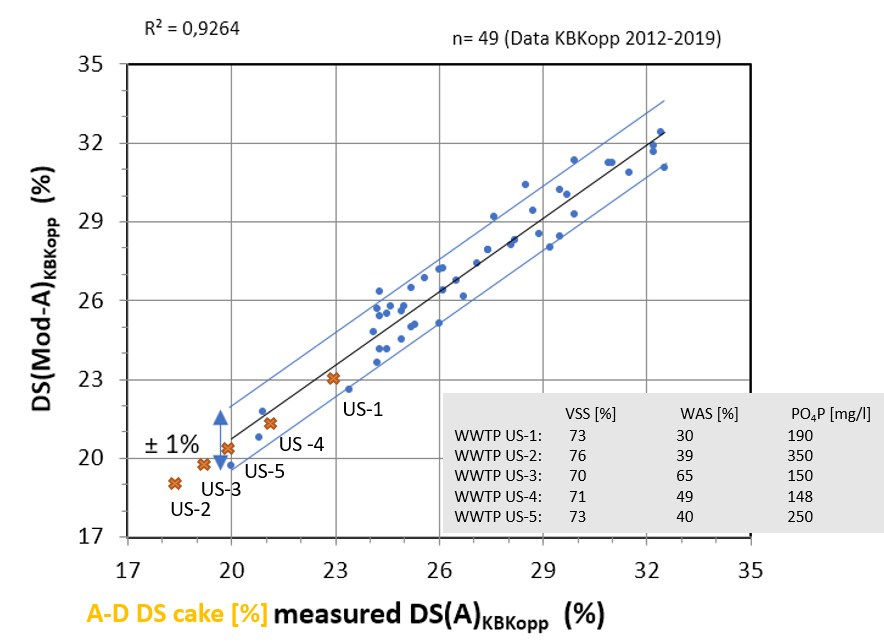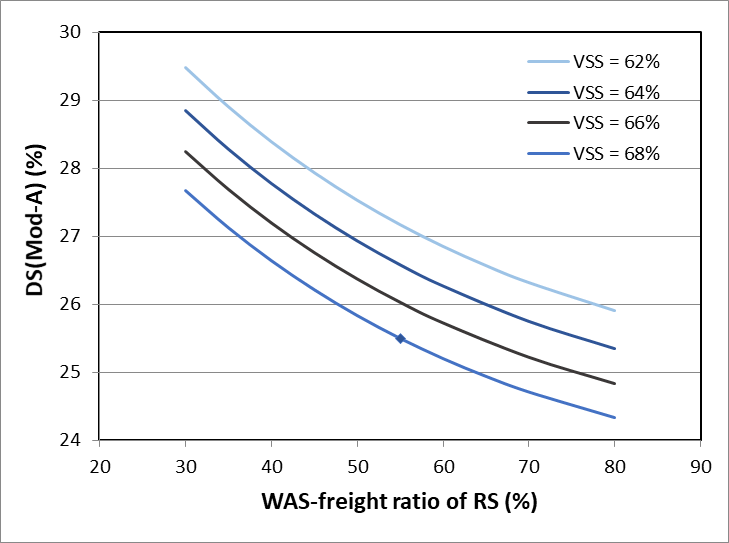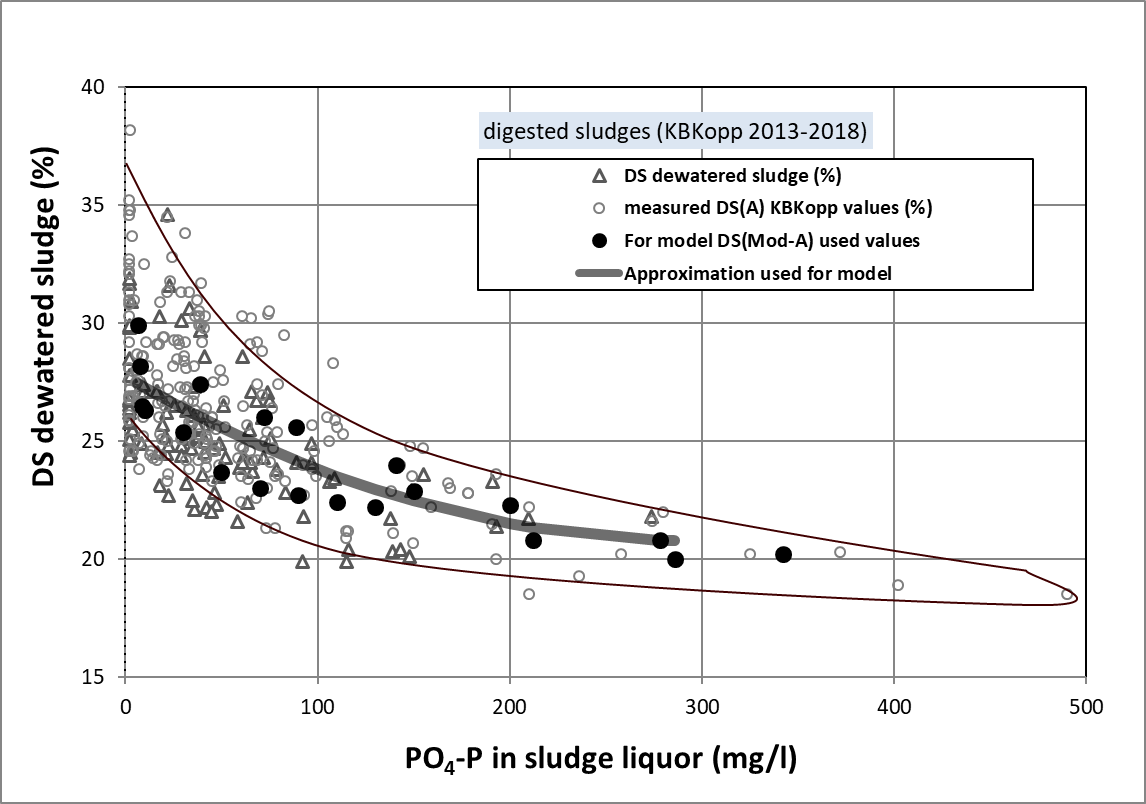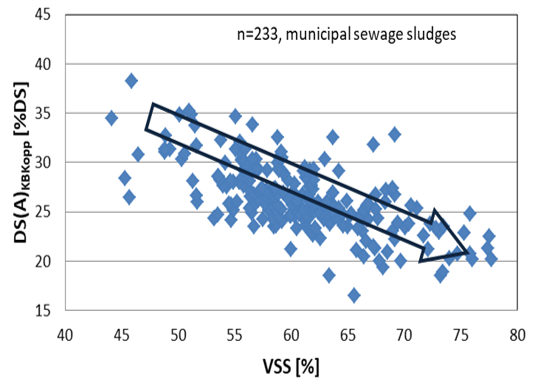Dewaterability model - value TR(Mod-A)
Successful dewatering optimization requires a good understanding the dewaterability of a particular sludge. To help with this a dewaterability model was developed to explain the main influences on dewaterability in wastewater treatment plant as well as the impact of different sludge conditioning technologies (i.e. cell lysis or phosphate sequestration) on its water binding characteristics.
While this model cannot replace measuring sludge dewaterability (s. DS(A)KBKopp) it can be used to improve one’s understanding of the dewatering performance, once calibrated to historical data. Armed with a better understanding of the current dewatering process performance, operators and engineers can develop optimisation strategies to reduce the overall dewatering and disposal cost.
The following figure shows the comparison of measured values DS(A)KBKopp to model values DS(Mod-A).

Source: WEFTEC 5-10.2020
The model is based on three dominant influences on the water binding in digested sludges:
1) The influence of the WAS fraction of DS of raw sludge load.

Source: WEFTEC 5-10.2020
2) The influence of water binding by phosphates.

Source: DWA, KA Korrespondenz Abwasser, Abfall - 2019 (66), Nr. 8
3) The organic content of the solids.



